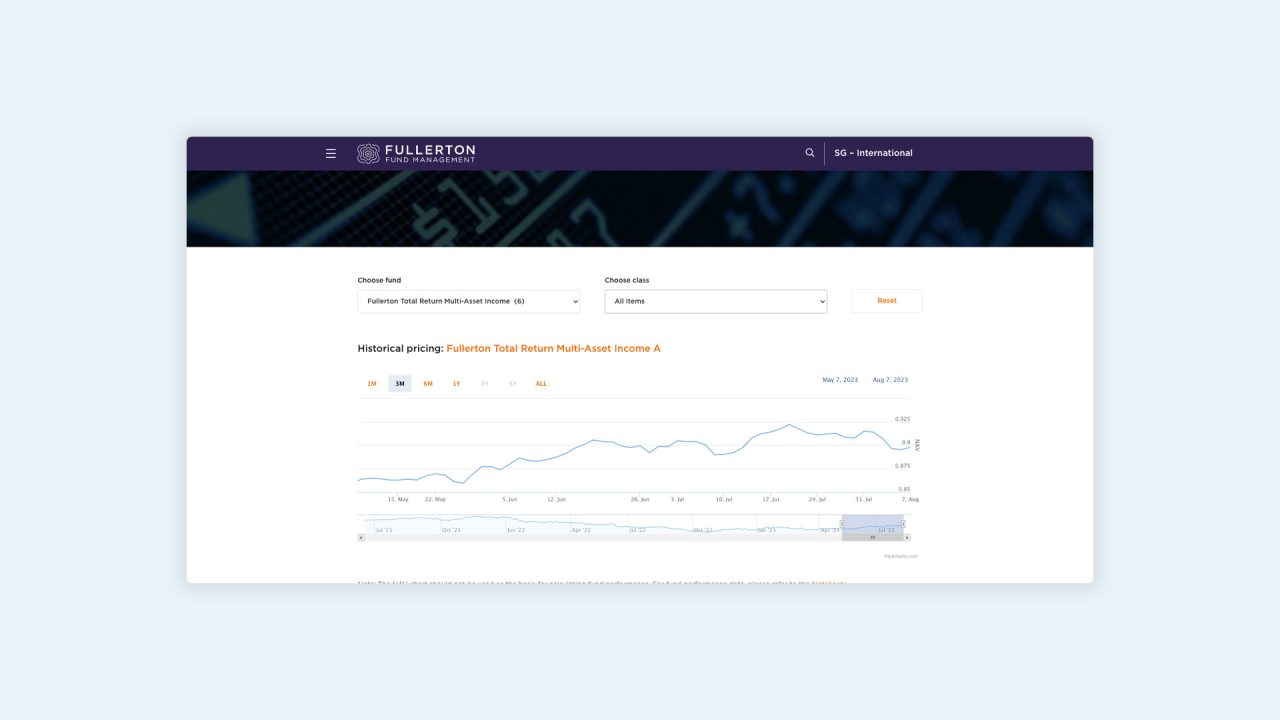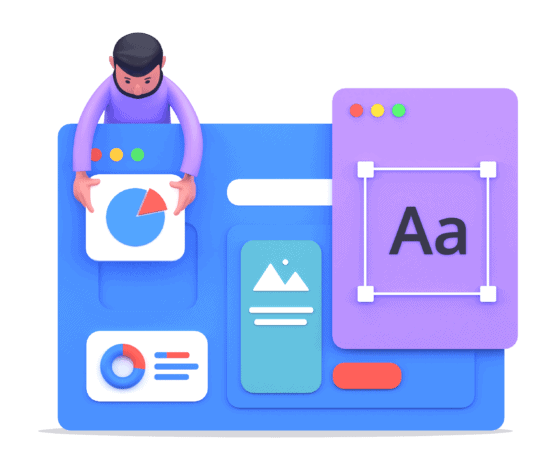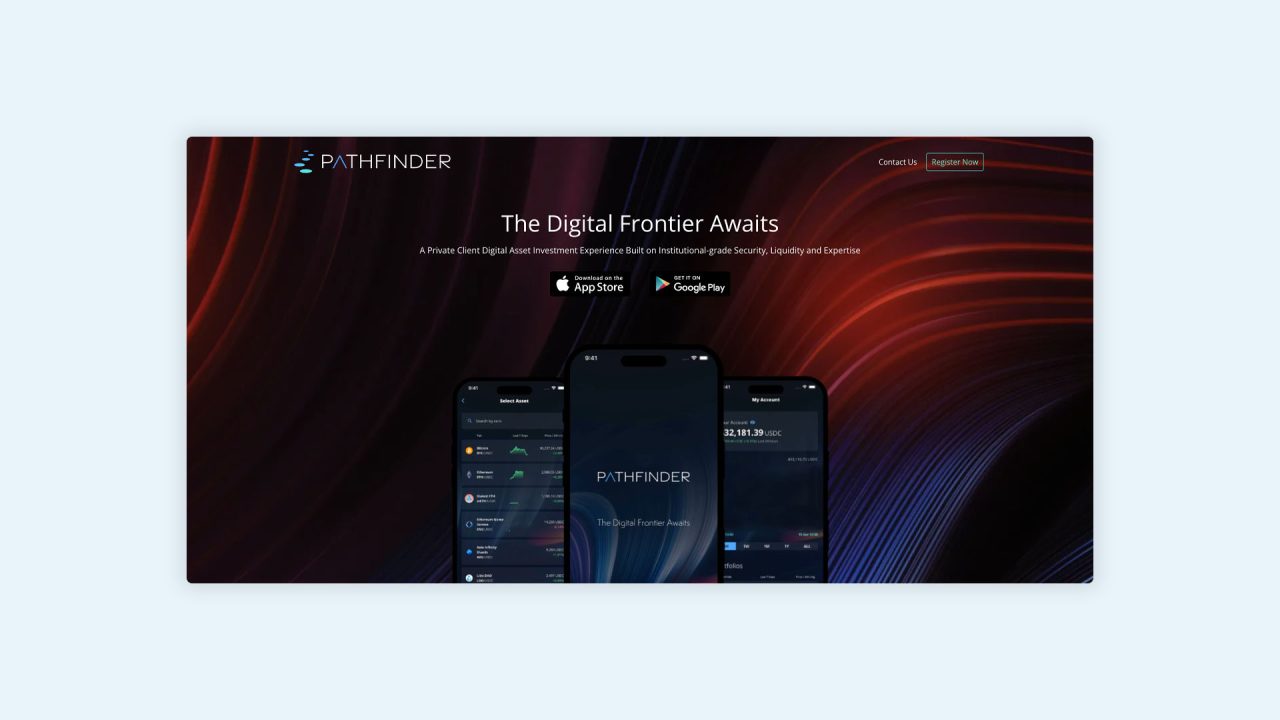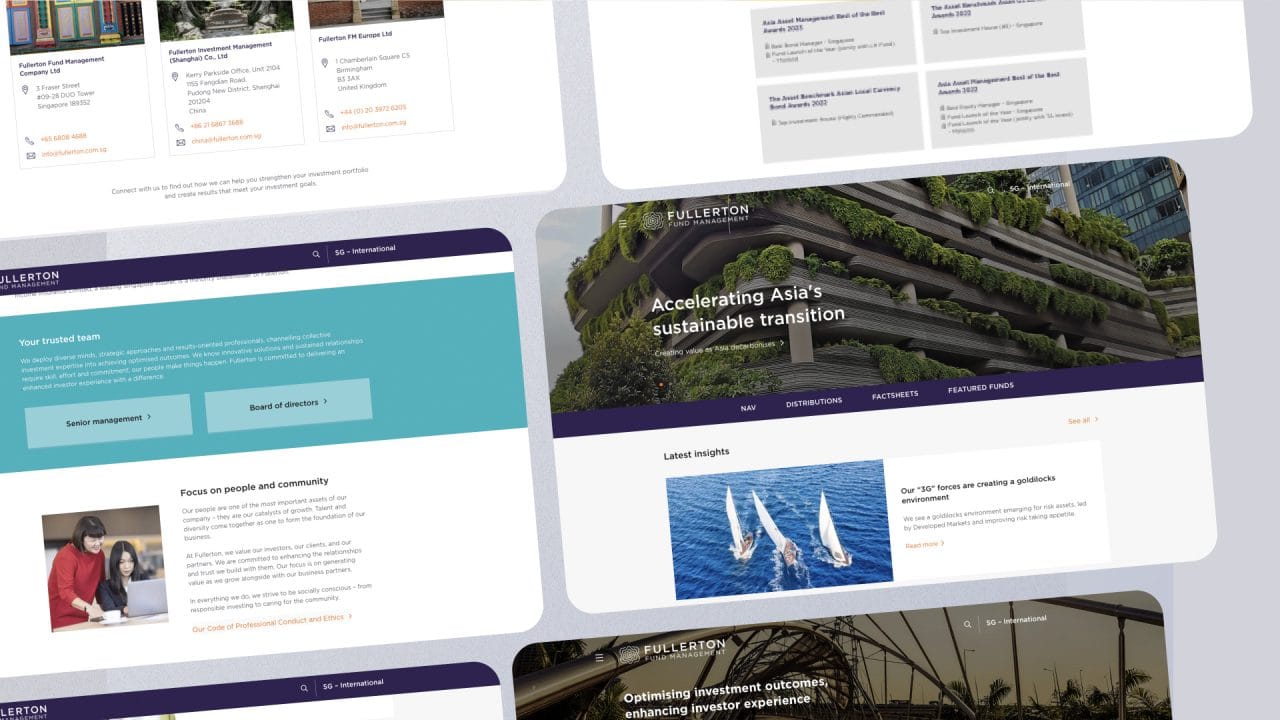
In the digital era, an effective financial website can be invaluable for industry professionals and consumers seeking financial advice.
To be successful, a financial website will be able to combine a comprehensive suite of resources, user-friendly design and credibility to empower visitors with the knowledge they need to make informed financial decisions. Trust is a BIG one when it comes to investments, so your online platform needs to confidently show you have the proper credentials and know what you are doing.
While there is no one-size-fits-all formula for designing an outstanding financial website, there are particular prerequisites that need to fulfil, including perfecting two of the biggest draw cards:
- User satisfaction
- Visitor engagement
This blog is designed to explain the structural must-haves for your financial website and what your customers are looking for when making investment deacons through online providers.
Ultimately, a well-crafted website must deliver valuable content and offer tools and resources that cater to a range of visitors’ needs. When you maintain a solid online presence, you earn the trust that results in take-ups and encourages return visits.
Key Takeaways
- An excellent financial website offers visitors relevant, trustworthy information and resources.
- User experience, mobile compatibility and engaging design are crucial for retaining and attracting users.
- Including expert opinions, rich media content, and social media integration enhances the website’s credibility and value.
Table of Contents
What Do You Need to Make A Good Financial Website?
There are a lot of prominent ingredients to consider when it comes to making an excellent financial website. We’ll go over the central nine in detail here for you.
It’s not just copying these nine items into a template. Each must be structured to reflect your company’s values, goals and objectives. Getting that right will ensure you have a harmonious flow from beginning to end which is essential for showing authenticity online and preventing your website from dating prematurely.
All websites need updating and ongoing maintenance but with your facial website, it becomes crucial to keep all your information up to date and running perfectly – to the minute if you are talking about stocks and currency values.

User Experience and Design
The best place to start is with user experience and design aspects. There are a few to consider, but the general rule of thumb as you make your design choices is minimalist. Less really is more; the more space you can leave around your content, the more precise and powerful your message will be.
Ease of Navigation
Smooth user experiences begin with ease of navigation. Users should be able to quickly and efficiently find the information they seek without complications.
- Organise menus and submenus logically
- Make site maps available
- Have breadcrumb trails that allow easy backtracking
- Include a savvy search function to enable users to locate specific information easily
Clarity and Readability
Financial information can often be complex and hard to digest, so clarity and readability are integral in ensuring a smooth user experience.
Present information clearly and concisely. This can include using bullet points to break down complex topics into digestible chunks and bold text highlighting critical information.
Carefully consider your audience when it comes to your sentence structure and terminology. Jargon should be kept to a minimum, and simplified language should be used where possible.
Fonts must be standard size and type, but it’s advantageous to include a responsive design that adapts to different screen sizes, rotations and devices to give users some control and choice. This will make your content visually appealing and easy to read regardless of whether users access the website on a computer, mobile phone or tablet.
Content and Features
An excellent financial website offers comprehensive and reliable information on money management, investing, personal finance, and budgeting. Readers want to see that you care about their money and how they spend it. Making an informed decision is high on their priority list.
Investing and Personal Finance
Investing and personal finance will be more specific to the type of products and services your company provides. Still, they should also include a full range of information resources on stocks, bonds, mutual funds, ETFs, and other investment options.
Tools such as market analysis, news updates and investment calculators are vital for helping users make informed decisions about their finances.
Consider your customers’ short and long-term goals to provide information and the guidance they might need around retirement planning, tax strategies and estate planning so you include their needs front and centre.
Money Management and Budgeting
Effective money management and budgeting are essential for both individuals and families, and an excellent financial website should offer features that support these practices. This can include articles, videos and interactive tools related to budgeting, expense tracking, and debt management.
Providing helpful resources on topics such as saving for emergencies, dealing with debt, and financial goal-setting can empower users to take control of their financial future.
Look to provide helpful, reliable and up-to-date information to assist users in making informed decisions about their finances as well as a variety of features such as interactive tools, articles and videos that can enhance the user experience and promote financial literacy.
Incorporating features such as budget planners, financial calculators and expense tracking tools can make managing finances more accessible and efficient, personalise your user experience, and help you stand out from the competition.
Our team can help you develop ideas and resources that suit your client’s needs and interests. For example, when we rebuilt the Fullerton Fund Management website, we integrated real-time investment data that took their client’s experience to the next level and made them the go-to experts in their field.

Resources and Tools
Interactive tools allow individuals to evaluate their financial health, plan future investments, and explore retirement options. It also helps make your website easier to use, stand out from the competition and provide a better user experience.
Financial Calculators and Planners
An excellent financial website offers various calculators and planners to help users make informed decisions. Think about what your clients will benefit from (there is no point just having something there to fill space and slow down your loading time).
Some standard calculators provided on such websites include:
- Mortgage Calculators – These help users estimate loan payments and balance schedules and determine the most suitable mortgage type.
- Savings Calculators – These assist users in calculating how much they would need to save each month to achieve a particular financial goal.
- Retirement Planners – These enable users to estimate the amount they need to save to retire comfortably and on schedule.
Expert Advice
Another essential feature of an excellent financial website is the availability of expert advice. Providing access to certified financial professionals enables visitors to gather insights into their specific financial situations. This advice typically includes tips on managing debt, budgeting, and investing.
A reliable financial website ensures it only features advice from credible and experienced professionals.
Learning
Your financial website should also provide comprehensive learning resources catering to varying financial knowledge levels. This includes articles, videos and infographics explaining essential financial concepts and practices.
A noteworthy financial website prioritises educating its users and supporting their learning growth as their financial journey advances.
Allowing choices and branches for different levels of investing experience is vital. You can have more advanced resources, such as webinars and whitepapers, to cater to customers seeking in-depth information.
Organising your learning material into well-defined categories makes it easy for users to locate specific information based on their needs and preferences.
We build stunning, user-focused websites that will wow your customers.
Are you a business owner in Singapore, Australia or worldwide? We work with clients across the globe to deliver beautiful yet functional website designs.

Mobile Compatibility
One of the critical aspects of an excellent financial website is its mobile compatibility. With the increasing number of smartphone users, ensuring that a financial website can cater to anyone researching or checking their investments is crucial.
iOS and Android Support
A financial website must provide seamless support for both iOS and Android platforms. This is because most smartphone users rely on these two operating systems. A financial website optimised for both platforms ensures it can reach a wider audience and cater to various users’ preferences.
- iOS – Ensuring compatibility with Apple’s operating system is essential. This involves designing the website with a responsive layout, automatically adjusting to fit the smaller screen sizes of iPhones and iPads. Following Apple’s design guidelines, like using appropriate font sizes and touch targets, will guarantee a user-friendly experience for iOS users.
- Android – Android has a diverse ecosystem with many devices and screen resolutions. To accommodate this, a financial website must be developed to work smoothly across Android devices, offering a seamless browsing experience. Ensure the website developer you hire uses scalable vector graphics (SVG) for images and icons to maintain sharpness on various screen resolutions.
In addition to platform-specific considerations, financial websites should also pay attention to basic Google core logics:
- Fast loading times – Mobile users tend to have limited patience regarding loading times. Therefore, a financial website should ensure its pages load quickly on mobile devices. This can be achieved by compressing images, implementing lazy loading, and minimising resource-intensive elements like animations.
- Easy navigation – When browsing on mobile devices, users should be able to navigate the financial website effortlessly. Intuitive menus, clear calls-to-action and easily accessible search functionality, provide an enjoyable user experience.
- Security – Financial websites often handle sensitive information, so implementing security measures like SSL encryption and two-factor authentication is critical to safeguard mobile device user data.
By focusing on mobile compatibility and providing iOS and Android support, a financial website can ensure a smooth user experience to all its visitors, regardless of the device they’re using.

Social Media Integration
An excellent financial website utilises social media platforms to facilitate interaction with its audience and enable credibility and relevance through multiple touchpoints.
Facebook and Instagram Engagement
Integrating Facebook and Instagram is particularly beneficial as they are popular social media networks across Singapore and Australia. Embedding business Facebook and Instagram posts and X (previously Twitter) feeds directly onto your website allows visitors to access and engage with relevant content easily.
These platforms offer unique benefits as they handle real-time information exchange, which is valuable in the fast-paced world of finance.
Financial experts and companies can create social network communities with followers for unique and personal interactions, answering questions and sharing updates. This direct communication fosters trust and credibility, enabling users to feel confident in the information provided.
Community Articles and Threads
In addition to social media engagement, you can encourage user-generated content through community articles and threads. This allows you to tap into the collective wisdom of your audience and access a valuable source of knowledge and experience.
To achieve this, clear community guidelines must be established to ensure that discussions remain focused and on-topic.
A financial website can cultivate a sense of belonging by creating a platform for users to share their insights, tips and experiences. Still, it does need to be supervised and governed, as any misinformation will be on your shoulders as the providing company. All content under your business name needs to be moderated to remain aligned with your values and professionalism, with spam misinformation and off-topic discussions quickly removed.
Relevant and Trustworthy Information
Finding a good financial website often relies on the accuracy and reliability of its information. In a world where market conditions change rapidly, investors must have access to the most up-to-date and trustworthy information.
Accurate Quotes and Data
A critical component of any financial website is the provision of accurate quotes and data. Investors rely on these numbers to track their investments and make informed decisions. Inaccurate quotes and data can lead to poor investments and potentially significant financial losses. When browsing a financial website, verifying that the information provided is sourced from reputable market data providers and is updated in real-time or with minimal delay is essential.
A good financial website should provide the necessary tools and information for investors to assess the credibility of the website.
This includes:
- Displaying the source of the data on each quote or data point
- Providing information on any fees or charges associated with accessing specific quotes or data
- Offering access to historical data for comparison and analysis
Trustworthy financial websites will adhere to regulatory guidelines and industry best practices when presenting quotes and data including accurate representation of securities, indices and other financial instruments, as well as a commitment to data privacy and security.
The website should also be transparent about its data sources and any associated fees or charges, and it must adhere to regulatory guidelines and industry best practices to maintain its credibility.

Additional Rich Media Content
Adding different media allows you to demonstrate your message to a broader audience in the most straightforward way possible and make it easier to understand and follow the required steps.
Incorporating high-quality photos, graphics or video can significantly enhance a financial website’s user experience.
This can be achieved in various ways, allowing you to add a personal touch through photos, videos, infographics and demonstrations.
Photos
Relevant images can help convey complex financial concepts and break up large blocks of text, making the content more visually engaging and easier to comprehend. A financial website can increase its effectiveness and readability by incorporating infographics, charts, and other visually appealing elements.
Videos
Videos offer an opportunity to present financial information in an easily digestible format. Engaging video content can explain financial processes or offer expert advice more personally and interactively. Users can watch videos at their own pace and may find them helpful when grasping complex or technical concepts. Not only do videos demonstrate a company’s expertise, but they also make a website more dynamic, elevating a financial website’s functionality and appeal.
Global and Local Perspectives
Consider appealing to global and local perspectives regardless of your business’s size or location. This helps to create a balance between catering to the needs of international clients and addressing specific regional regulations.
Taking international perspectives into account allows a financial website to maintain a competitive edge by presenting a broad range of investment opportunities and market insights. Providing resources and tools for global finance, such as currency converters, are essential for users dealing with clients in various countries.
Simultaneously, focusing on local regulations and market trends is crucial for ensuring state and national compliance and relevance.
A financial website should reflect regional differences to facilitate informed decision-making tailored to users’ specific locations.
When creating a high-quality, informative platform, understanding and presenting information based on recent legal developments is indispensable.

Research and Science
Financial websites backed by significant research and scientific methods make better, well-informed decisions. The website’s credibility increases, and users feel confident in the quality of the provided information.
To make the best use of research, a financial website should gather data from various reliable sources, such as government publications, financial institutions and reputable research firms.
Skilled researchers can then analyse the data using relevant financial and statistical models. Proper analysis gives valuable insights into market trends, economic forecasts, and investment opportunities. This, alongside publications and financial platforms, gives users a sense of trust and confidence, leading to better financial decisions and success in investments.
Popular Publications and Platforms
When it comes to the world of finance, several vital publications and platforms stand out as sources of quality information. Forbes is a leading global media company focusing on business, technology and investing, covering essential topics relating to personal finance, stocks, bonds and market trends.
The strength of a good financial website lies in its ability to provide accurate, up-to-date, and relevant information.
In addition to Forbes, other popular publications include:
- The Financial Times
- The Wall Street Journal
- The Economist
These publications offer online and published financial news, analysis and expert opinions on various subjects, catering to various financial readers.
All websites need easy navigation and a user-friendly interface to be successful. Still, the importance of these website elements in a complex and potentially risky financial environment becomes all the more essential.
Easy navigation ensures that your readers can find the information they’re seeking without difficulty, to maximise their engagement and time spent on your website, creating better trust and a willingness to return. You can take enhancement further by using optimised visual elements, such as tables, graphs and charts, which contribute to clarity, learning and readability of the financial data presented, even when it becomes a complex concept.
Ensure you keep your website updated across every aspect, from design to content, to fix issues and offer accurate, current and relevant information from reputable sources.
These factors collectively contribute to creating an informative and engaging platform. If you need assistance designing, improving or expanding your financial website, contact our team for expert assistance and guidance.




